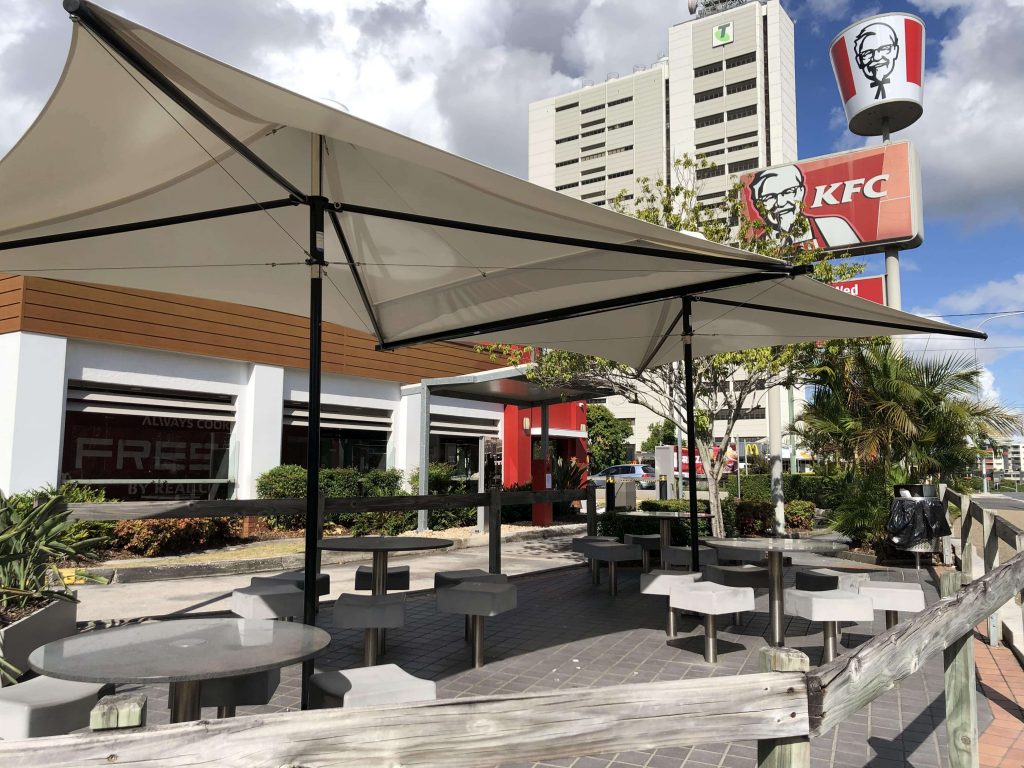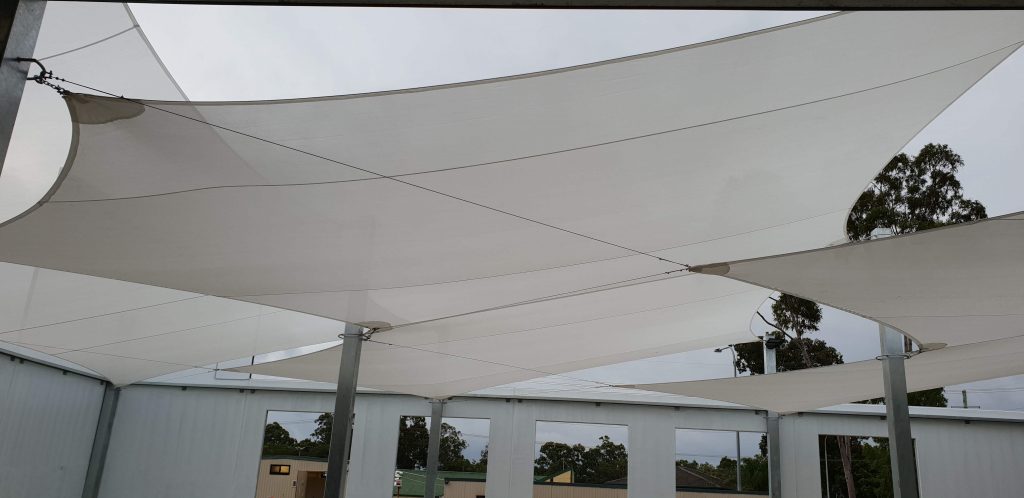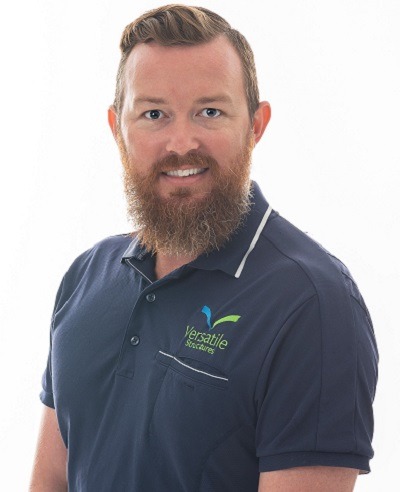YOU ARE HERE:

Waterproof Shade Structures vs Shade Sail Structures
Jamie Howard In Waterproof Shade Structures, Commercial Shade Structures, Shade Sail
Waterproof shade structures and shade sail structures are a great investment.
Both offer additional space shaded from harmful UV rays and keep your adjoining home or business cooler, reducing your energy bills. They also add value to your property – and, aesthetically, they look great.
Waterproof Shade Sails also offer the added bonus of being an effective rain shield, protecting you and your property from all types of weather – even heavy downpours.
But what are the main differences between a waterproof shade structure and a shade sail structure? And which should you spend your money on?
The difference is in the material…
One of the major differences between waterproof shade structures and shade sail structures is the specialist material or fabric used overhead.
Some of the best materials used in shade sail in Brisbane include:
High-density polyethylene (HDPE) – Not waterproof
High-density polyethylene (HDPE) is a permeable material with tiny holes that allow hot air to escape. It’s chemical, mould, rot, and sun resistant, with high water run-off.

Polyvinyl chloride (PVC) membrane fabric – Waterproof
Polyvinyl chloride (PVC) coated polyester membrane fabric is strong, versatile, and flexible with 100 per cent waterproof properties.

Polytetrafluoroethylene (PTFE) – Waterproof
PTFE or polytetrafluoroethylene is a woven fibreglass membrane. It’s extremely durable, waterproof, wind-resistant, and UV ray resistant.

Both waterproof and shade sail materials come in a range of colours, allowing you to select one that matches your design and aesthetic.
It’s important to note that high water run-off is not the same as being waterproof. The first is shower-proof, offering protection only from light rain. The second is fully leak-proof, even in torrential downpours.
…and in the design, installation and price
Unlike shade sail structures, Waterproof shade Sails require unique design features such as cross bracing structural supports and angling to ensure water doesn’t pool on the top and create too much weight.
Because of this, hiring an expert who can design and install your shade structure is recommended. They’ll consider your usage needs, the local weather conditions and help you apply for council approval if required.
Waterproof shade structure material is also pricier than standard fabric shade sail fabric.
Importantly, waterproof shade structure fabrics aren’t as stretchy as standard fabric ones. This means you need to ensure your measurements for the structure are correct as you won’t have much leeway.
Waterproof or shade sail – Which should you choose?
Whether a waterproof shade structure or shade sail structure is best depends on your needs and what you want your shade structure to do.
If you’re looking for a simple shade you can sit under in the summer months or protection for playground equipment, a shade sail structure should be fine.
However, if you’re after something more premium or want a car park shade sail or another type of commercial shade sails, a durable waterproof shade structure is your best option.
Waterproof shade structures are lower maintenance. In fact, many are self-cleaning, using the rainwater to clean themselves.
Waterproof shade structures are always a good option in Brisbane, the Gold Coast, and other tropical cities and regions as they offer protection from the extremes of both sun and rain.
What are the best waterproof shade structures?
If you decide to opt for a waterproof shade structure, it’s important you look for quality brands engineered and proven to withstand all weather conditions.
Select brands that meet all Australian quality standards, including ones that meet the wind ratings set out in Australian Standards AS/NZS 1170:2:2002.
Some of the top waterproof shade structure brands in the market include:
- Serge Ferrari – PVC shade fabrics
- Mehler Texnologies – Coated fabrics
- Verseidag – Coating and composite
Don’t forget to also look for lifespan and warranties assurances. A good quality shade structure should last between 10-30 years.
Still unsure whether to get a standard or waterproof shade Sails or ready to take the next step? Get in touch with our experienced team today, who can talk you through your options and provide you with a free quote.
Share:
Jamie Howard - Director
Co-founder and Director Jamie has been hands-on in the shade and steel industry since leaving school. With over 15 years’ experience in shade, membrane and steel projects, Jamie is excited about the design opportunities shade structures offer in the commercial and industrial sectors. Jamie’s extensive design skills give him a competitive edge in situations with technical design complexity. He has won two personal industry awards for his designs, alongside many company-won awards.

